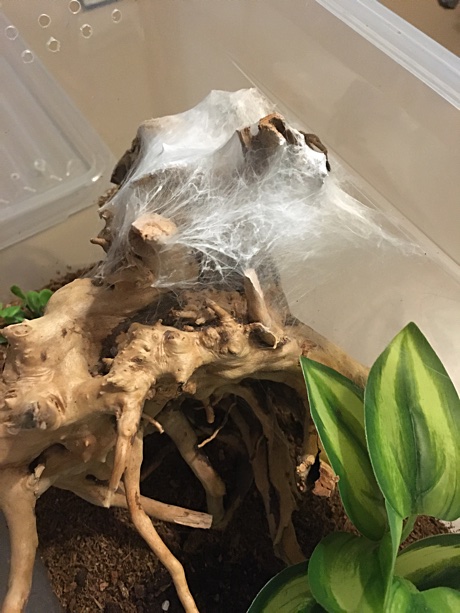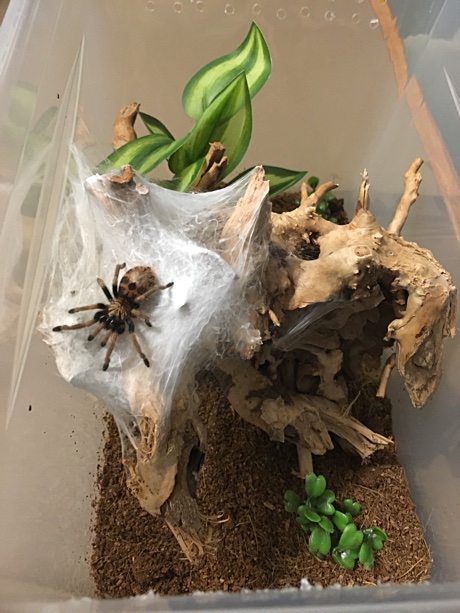Anchor Points for Webbing
In the early evening I commented on a terrarium video posted on Facebook that if I was the owner of the terrarium I would provide more higher anchor points to the Chromatopelma cyaneopubescens shown webbing around. I keep this species in a plastic container with quite some height as I understand that this species can be found several feet above the ground:
Chromatopelma cyaneopubescens live in extreme xeric conditions in sandy thorn tree/cactus forests on the Paraguana Peninsula of Venezuela. This species is an "opportunistic burrower", whereby, they will make their silken retreats in the dried fissures of the ground, in old dried and piled up cacti, at the base of large thorny trees or up in the natural cavities of those thorny acacia tree ... basically, wherever the prey availability forces them to make their retreat. The trees are rarely higher than 12 feet and either cracks in the tree or natural tree cavities are never above 6 feet.
There are MANY theraphosid taxa that live high in trees that are not true arboreals AND there are true arboreals that have been found living in fossorial ground burrows or under fallen logs lying on the ground.
Source: Chromatopelma cyaneopubescens-- Arboreal vs Terrestrial.


So I keep this species without a water dish on dry coco peat with only a small part kept moist. I also place a drop of water on the web near the spider now and then. On the 8th of April, 2020 I could take photos of this specimen taking moisture from the substrate.